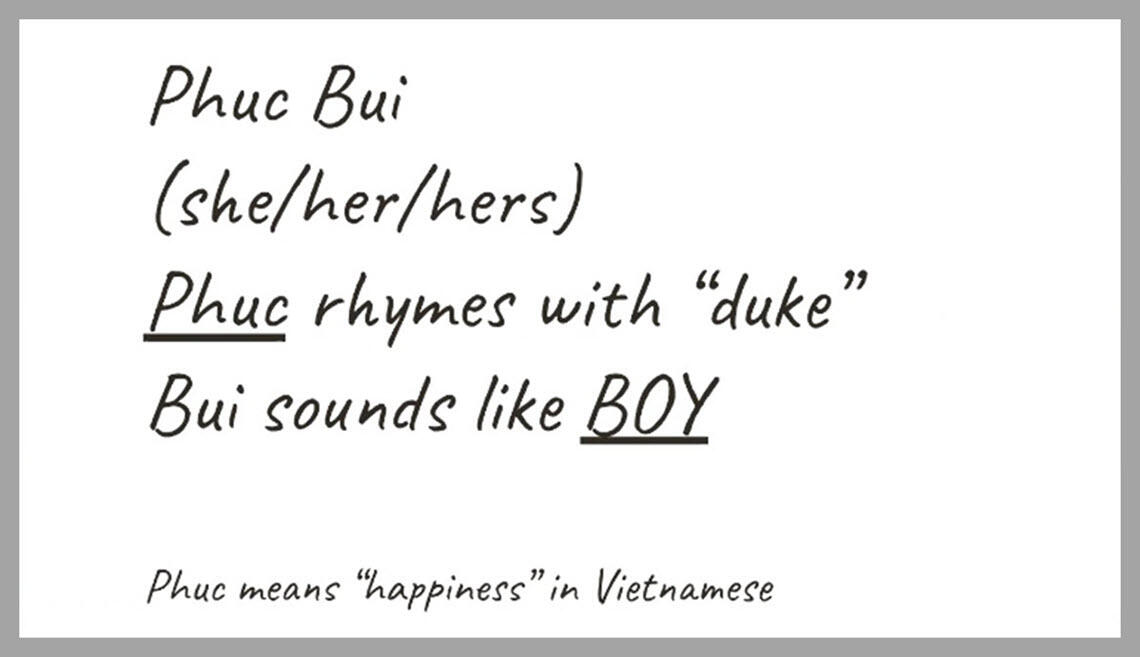
Credit: © Penn State is licensed under CC BY-NC-SA 4.0
Communicate respect for your students by learning the correct pronunciations and preferred versions of their names and by allowing space for pronoun sharing. Avoid mispronouncing student names in class, which usually results in discomfort for everyone involved. This is especially important because research has shown that students who are uncomfortable are less likely to perform well.
As you work with names and pronouns, be aware of unconscious biases and our susceptibility to them. Widely available trainings for addressing unconscious biases, readily available on the internet, explain why it’s dangerous and potentially harmful to make assumptions about people based on their names and pronouns.
Give these ideas a try:
- Hand out index cards and phonetic charts so that students can produce pronunciation guides like the one pictured above. You might use name tents in the same way, and then bring them with you to each class meeting. Keep these pronunciation guides in your office and practice before meeting with individual students.
- For the first class meeting, have students check off their names on the course roster instead of calling roll orally.
- Record students saying their own names – A media tool in Canvas’ discussion forums can help with this, as can the tools Voice Thread and Flip. And Zoom and Kaltura are good options, too, to record student voices.
- Once you’ve got a handle on correct pronunciations, use students’ names in class.
- Assign quick group assignments that give students the chance to do two things at once: solve a problem and share their names and the significance of their names with one another.
- Allow for students to self-identify their pronouns but don’t suggest that they must. If students want to share, allow this to happen on paper instead of requiring that students speak out in class.